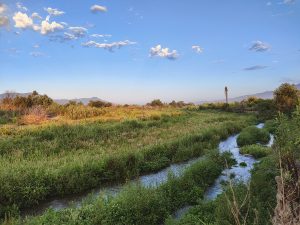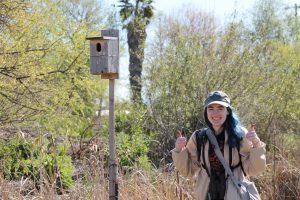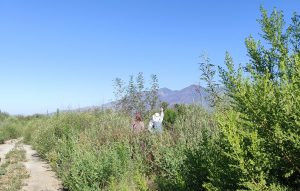Starting in 2019, restoration of the Cienega Springs Ecological Reserve (CSER) in Fillmore has been conducted by UC Santa Barbara (UCSB) and the Santa Clara River Conservancy (SCRC) to restore willow-cottonwood riparian woodland, emergent freshwater marsh, and patches of riparian and coastal sage scrub where non-native giant reed (Arundo donax; “Arundo”) was removed. The 260-acre property originally was farmed intensively and was extremely degraded. Restoration efforts have included reestablishing and enhancing riparian and wetland vegetation, collecting and growing a diversity of native riparian species to promote climate resiliency and drought tolerance, preparing soil to facilitate plant establishment, reducing competitive weed populations, and maintaining vegetation.

Cienega Springs Ecological Reserve (CSER)
Vegetation and wildlife responses, especially bird species’ response, have been monitored by the WFVZ and their partners throughout the project period and afterward to guide adaptive management and assess progress toward project watershed conservation goals. WFVZ avian biologists have found and protected hundreds of birds’ nests, including those of the endangered Least Bell’s Vireo (Vireo bellii pusillus), and have provided nest boxes for cavity-nesting species and conducted bird point counts to monitor population trends across the site since 2019. Surveys for Southwestern Willow Flycatcher (Empidonax traillii extimus) and Western Yellow-billed Cuckoo (Coccyzus americanus occidentalis) are conducted each breeding season to monitor their possible recolonization onto the site. Bird nest boxes are monitored each breeding season for activity, a task that is often given to WFVZ interns to allow them to gain field skills! Through the hard work of the restoration crew, CSER has become a beautiful site teeming with wildlife and will hopefully be open to the public in 2026!


WFVZ field research assistant next to nest box at CSER and WFVZ field research assistant and biologist searching for inactive LBVI nest
